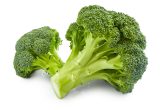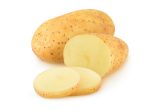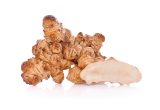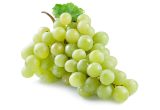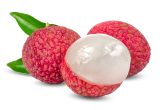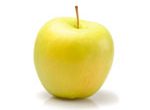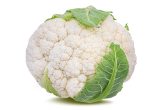Beetroot


Description
- Beetroot (Beta vulgaris L.) belongs to the Chenopodiaceae family.
- There are several cultivars including Red Sphere, Rocket and Wodan (Mroczek, 2012).
PHYSICAL AND ORGANOLEPTIC CHARACTERISTICS
- The compound responsible for the reddish-purple colour of beetroot is betalain, a water-soluble pigment found in the tuberous part of beetroots (Vieira Teixeira da Silva, 2019).
- Four betalains predominate in red beetroot: 2 betacyanins (betanin and isobetanin) and 2 betaxanthins (vulgaxanthin I and vulgaxanthin V) (Lee, 2014).
COMPOSITION CHARACTERISTICS (excluding macronutrients, vitamins and minerals)
- Betanin has antioxidant, anti-inflammatory, hepatoprotective properties and anti-proliferative effects on tumour cells (Vieira Teixeira da Silva, 2019).
- The root contents of 3 red beetroot cultivars were analysed: Red Sphere, Rocket and Woldan (Mroczek, 2012). The 3 cultivars contain 11 saponins consisting of oleanolic acid or aglycone including hederagenin and different amounts of sugars (Mzoczek, 2012).
- Saponins have antiviral, antidiabetic and antihemolytic properties (Baião, 2017).
- Beetroot contains a significant amount of nitrate, a compound with beneficial effects on cardiovascular health (Vieira Teixeira da Silva, 2019). Nitrate increases the production of nitric acid (NO) which helps prevent certain pathologies such as hypertension, and also stimulates the degradation of certain parasites and tumour cells (Baião, 2017; Vieira Teixeira da Silva, 2019).
- Beetroot is also a source of polyphenols including gallic acid, a hydroxycinnamic acid usually found in tropical fruits, and quercetin, belonging to the flavonol family (Singh, 2016). Beetroot skin is also reported to contain ferulic acid, an organic acid (Baião, 2017).
*Average composition given as an indication: the following values are approximate and depend on variety, season, ripeness, cultivation conditions, etc. The data on polyphenols is taken from the Phenol-Explorer 3.0 database. All other data is taken from the Ciqual Table of nutritional composition of foods (2017) – ANSES, except for the Vitamin A equivalent which corresponds to the division of the Beta-carotene content by 6.
RAW
The following values are approximate and depend on variety, season, ripeness, cultivation conditions, etc.
Raw beetroot provides an average of 50.20 calories (kcal) per 100 g, i.e. 212 kJ. A beetroot weighs on average 125 g, which represents an average of 62.75 kcal.
COMPOSITION TABLES
For each nutrient, the tables provide information on the content, the minimum and maximum values as well as the percentage of the Dietary Reference Values (DRVs) for 100 g net of raw red beetroot.
MACRONUTRIENTS
| Constituent (g) | Average content |
Min-Max per 100g |
DRV% |
|---|---|---|---|
| Water | 86,70 | 82,20 - 90,40 | - |
| Fibers | 2,55 | 1,90 - 2,80 | - |
| Carbohydrates | 9,10 | - | 3,50 |
| Sugars | 6,76 | - | 7,51 |
| Lipids | 0,24 | 0,17 - 0,30 | 0,34 |
| Saturated fat | 0,038 | 0,027 - 0,048 | 0,19 |
| Protein | 1,74 | 0,20 - 2,50 | 3,48 |
| Constituent (g) | Amount | Min-Max | DRV% |
|---|---|---|---|
| Water | Ciqual 2020 | - | Règlement (UE) N°1169/2011 du parlement Européen et du conseil du 25 octobre 2011 |
| Fibers | Ciqual 2020 | - | - |
| Carbohydrates | Ciqual 2020 | - | Règlement (UE) N°1169/2011 du parlement Européen et du conseil du 25 octobre 2011 |
| Sugars | Ciqual 2020 | - | Règlement (UE) N°1169/2011 du parlement Européen et du conseil du 25 octobre 2011 |
| Lipids | Ciqual 2020 | - | Règlement (UE) N°1169/2011 du parlement Européen et du conseil du 25 octobre 2011 |
| Saturated fat | Ciqual 2020 | - | Règlement (UE) N°1169/2011 du parlement Européen et du conseil du 25 octobre 2011 |
| Protein | Ciqual 2020 | - | Règlement (UE) N°1169/2011 du parlement Européen et du conseil du 25 octobre 2011 |
Zoom on carbohydrates
- Raw red beetroot contains a significant amount of carbohydrates (9.10 g per 100 g), which is much higher than the average for raw vegetables (4.45 g per 100 g).
Zoom on fibres
- It also contains a significant amount of fibre (2.55 g per 100 g), slightly higher than the average amount found in raw vegetables (2.43 g per 100 g).
Zoom on proteins
- The amount of protein (1.74 g per 100 g) is slightly higher than the average amount found in raw vegetables (1.87 g per 100 g).
Zoom on lipids
- The amount of fat (0.24 g per 100 g) is lower than the average amount found in raw vegetables (0.56 g per 100 g).
- This amount is also less than 0.5 g per 100 g, meaning raw red beetroot is fat-free*.
Regulation (EC) No 1924/2006 of the European Parliament and of the Council of 20 December 2006 on nutrition and health claims made on foods.
MINERALS AND TRACE ELEMENTS
| Constituent | Average content |
Min-Max per 100g |
DRV% |
|---|---|---|---|
| Calcium (mg) | 22,10 | 14,80 - 59 | 2,76 |
| Chloride (mg) | - | - | - |
| Copper (mg) | 0,098 | 0,075 - 0,17 | 9,80 |
| Iron (mg) | 0,70 | 0,36 - 1,15 | 5 |
| Iodine (µg) | 0,50 | 0,10 - 0,80 | 0,33 |
| Magnesium (mg) | 19 | 11 - 23 | 5,07 |
| Manganese (mg) | 0,46 | 0,14 - 1,08 | 23 |
| Phosphorus (mg) | 38,10 | 26,10 - 51,70 | 5,44 |
| Potassium (mg) | 328 | 272 - 383 | 16,40 |
| Selenium (µg) | 0,20 | NC - 0,70 | 0,36 |
| Sodium (mg) | 60,50 | 10,10 - 78 | - |
| Zinc (mg) | 0,54 | 0,27 - 2,80 | 5,40 |
| Constituent | Amount | Min-Max | DRV% |
|---|---|---|---|
| Calcium (mg) | Ciqual 2020 | - | Règlement (UE) N°1169/2011 du parlement Européen et du conseil du 25 octobre 2011 |
| Chloride (mg) | Ciqual 2020 | - | Règlement (UE) N°1169/2011 du parlement Européen et du conseil du 25 octobre 2011 |
| Copper (mg) | Ciqual 2020 | - | Règlement (UE) N°1169/2011 du parlement Européen et du conseil du 25 octobre 2011 |
| Iron (mg) | Ciqual 2020 | - | Règlement (UE) N°1169/2011 du parlement Européen et du conseil du 25 octobre 2011 |
| Iodine (µg) | Ciqual 2020 | - | Règlement (UE) N°1169/2011 du parlement Européen et du conseil du 25 octobre 2011 |
| Magnesium (mg) | Ciqual 2020 | - | Règlement (UE) N°1169/2011 du parlement Européen et du conseil du 25 octobre 2011 |
| Manganese (mg) | Ciqual 2020 | - | Règlement (UE) N°1169/2011 du parlement Européen et du conseil du 25 octobre 2011 |
| Phosphorus (mg) | Ciqual 2020 | - | Règlement (UE) N°1169/2011 du parlement Européen et du conseil du 25 octobre 2011 |
| Potassium (mg) | Ciqual 2020 | - | Règlement (UE) N°1169/2011 du parlement Européen et du conseil du 25 octobre 2011 |
| Selenium (µg) | Ciqual 2020 | - | Règlement (UE) N°1169/2011 du parlement Européen et du conseil du 25 octobre 2011 |
| Sodium (mg) | Ciqual 2020 | - | Règlement (UE) N°1169/2011 du parlement Européen et du conseil du 25 octobre 2011 |
| Zinc (mg) | Ciqual 2020 | - | Règlement (UE) N°1169/2011 du parlement Européen et du conseil du 25 octobre 2011 |
Zoom on minerals and trace elements
- Raw beetroot is a source of:
- manganese as it provides the equivalent of 23% of DRVs, i.e. 0.46 mg per 100 g,
- potassium as it provides the equivalent of 16.40% of DRVs, i.e. 328 mg per 100 g.
- Raw beetroot also provides the equivalent of 9.80% of DRVs for copper, i.e. 0.098 mg per 100 g.
- The other minerals and trace elements are present in quantities representing less than 6% of DRVs.
VITAMINS
| Constituent | Average content |
Min-Max per 100g |
DRV% |
|---|---|---|---|
| Provitamin A Beta-carotene (µg) | 20 | - | - |
| Vitamin A equivalent (µg) | 3,33 | - | 0,42 |
| Vitamin B1 (mg) | 0,028 | 0,017 - 0,039 | 2,55 |
| Vitamin B2 (mg) | 0,043 | 0,037 - 0,056 | 3,07 |
| Vitamin B3 (mg) | 0,27 | 0,15 - 0,38 | 1,69 |
| Vitamin B5 (mg) | 0,15 | NC - 0,16 | 2,50 |
| Vitamin B6 (mg) | 0,059 | 0,037 - 0,067 | 4,21 |
| Vitamin B9 (µg) | 100 | 91 - 109 | 50 |
| Vitamin C (mg) | 6,45 | 4,90 - 12 | 8,06 |
| Vitamin E (mg) | 0,06 | 0,04 - 0,09 | 0,50 |
| Vitamin K1 (µg) | 0,20 | - | 0,27 |
| Constituent | Amount | Min-Max | DRV% |
|---|---|---|---|
| Provitamin A Beta-carotene (µg) | Ciqual 2020 | - | - |
| Vitamin A equivalent (µg) | Calcul à partir de la valeur Provitamine A Béta-carotène* | - | Règlement (UE) N°1169/2011 du parlement Européen et du conseil du 25 octobre 2011 |
| Vitamin B1 (mg) | Ciqual 2020 | - | Règlement (UE) N°1169/2011 du parlement Européen et du conseil du 25 octobre 2011 |
| Vitamin B2 (mg) | Ciqual 2020 | - | Règlement (UE) N°1169/2011 du parlement Européen et du conseil du 25 octobre 2011 |
| Vitamin B3 (mg) | Ciqual 2020 | - | Règlement (UE) N°1169/2011 du parlement Européen et du conseil du 25 octobre 2011 |
| Vitamin B5 (mg) | Ciqual 2020 | - | Règlement (UE) N°1169/2011 du parlement Européen et du conseil du 25 octobre 2011 |
| Vitamin B6 (mg) | Ciqual 2020 | - | Règlement (UE) N°1169/2011 du parlement Européen et du conseil du 25 octobre 2011 |
| Vitamin B9 (µg) | Ciqual 2020 | - | Règlement (UE) N°1169/2011 du parlement Européen et du conseil du 25 octobre 2011 |
| Vitamin C (mg) | Ciqual 2020 | - | Règlement (UE) N°1169/2011 du parlement Européen et du conseil du 25 octobre 2011 |
| Vitamin E (mg) | Ciqual 2020 | - | Règlement (UE) N°1169/2011 du parlement Européen et du conseil du 25 octobre 2011 |
| Vitamin K1 (µg) | Ciqual 2020 | - | Règlement (UE) N°1169/2011 du parlement Européen et du conseil du 25 octobre 2011 |
Zoom on vitamins
- Raw red beetroot is high in vitamin B9 as it represents 50% of DRVs, i.e. 100 µg per 100 g.
- The other vitamins present in red beetroot represent less than 9% of DRVs.
*Calculation performed: Beta-Carotene / 6 + retinol
POLYPHENOLS
| Constituent (mg) | Average content |
Min-Max per 100mg |
|---|---|---|
| Flavonoids (mg) | 0,50 | 0 - 2,50 |
| of which Flavonols (mg) | 0,13 | 0 - 1,83 |
| of which Flavones (mg) | 0,37 | 0 - 0,67 |
| Lignanes (mg) | 0,07 | 0,07 - 0,07 |
| Total polyphenols | 0,51 | 0 - 2,51 |
| Constituent (mg) | Amount | Min-Max |
|---|---|---|
| Flavonoids | Phénol-Explorer version 3.6 Méthode utilisée : Chromatographie après hydrolyse | - |
| of which Flavonols | Phénol-Explorer version 3.6 Méthode utilisée : Chromatographie après hydrolyse | - |
| of which Flavones | Phénol-Explorer version 3.6 Méthode utilisée : Chromatographie après hydrolyse | - |
| Lignanes | Phénol-Explorer version 3.6 Méthode utilisée : Chromatographie après hydrolyse | - |
| Total polyphenols | Phénol-Explorer version 3.6 Méthode utilisée : Chromatographie après hydrolyse | - |
Zoom on polyphenols
- Polyphenols are substances with an antioxidant effect.
The polyphenols present in raw red beetroot are mainly flavonoids according to chromatographic analysis after hydrolysis.
COOKED
The following values are approximate and depend on variety, season, ripeness, cultivation conditions, etc.
Cooked red beetroot provides an average of 42.80 calories (kcal) per 100 g, i.e. 180 kJ. A beetroot weighs on average 125 g, which represents an average of 53.50 kcal.
COMPOSITION TABLES
For each nutrient, the tables provide information on the content, the minimum and maximum values and the percentage of the Dietary Reference Values (DRVs) for 100 g net of cooked beetroot.
MACRONUTRIENTS
| Constituent (g) | Average content |
Min-Max per 100g |
DRV% |
|---|---|---|---|
| Water | 88,30 | 87,10 - - | - |
| Fibers | 2,50 | 2 - NC | - |
| Carbohydrates | 7,13 | 0 - NC | 2,74 |
| Sugars | 6,70 | NC - 7,96 | 7,44 |
| Lipids | 0,40 | 0,18 - NC | 0,57 |
| Saturated fat | 0,15 | 0,028 - NC | 0,75 |
| Protein | 1,44 | 1,40 - 1,68 | 2,88 |
| Constituent (g) | Amount | Min-Max | DRV% |
|---|---|---|---|
| Water | Ciqual 2020 (valeur issue des analyses Ciqual-Aprifel 2018) | - | - |
| Fibers | Ciqual 2020 (valeur issue des analyses Ciqual-Aprifel 2018) | - | - |
| Carbohydrates | Ciqual 2020 | - | Règlement (UE) N°1169/2011 du parlement Européen et du conseil du 25 octobre 2011 |
| Sugars | Ciqual 2020 (valeur issue des analyses Ciqual-Aprifel 2018) | - | Règlement (UE) N°1169/2011 du parlement Européen, et du conseil du 25 octobre 2011 |
| Lipids | Ciqual 2020 (valeur issue des analyses Ciqual-Aprifel 2018) | - | Règlement (UE) N°1169/2011 du parlement Européen et du conseil du 25 octobre 2011 |
| Saturated fat | Ciqual 2020 (valeur issue des analyses Ciqual-Aprifel 2018) | - | Règlement (UE) N°1169/2011 du parlement Européen et du conseil du 25 octobre 2011 |
| Protein | Ciqual 2020 (valeur issue des analyses Ciqual-Aprifel 2018) | - | Règlement (UE) N°1169/2011 du parlement Européen et du conseil du 25 octobre 2011 |
Zoom on carbohydrates
- Cooked red beetroot contains mostly carbohydrates (7.13 g per 100 g), mainly in the form of sucrose (5.30 g per 100 g). The other carbohydrates in cooked red beetroot are glucose (0.80 g per 100 g) and fructose (0.60 g per 100 g).
- The carbohydrate content of red beetroot is higher than the average content in cooked vegetables (4.85 g per 100 g).
Zoom on fibres
- The amount of fibre (2.50 g per 100 g) in cooked red beetroot is lower than the average amount in cooked vegetables (2.89 g per 100 g).
Zoom on proteins
- The amount of protein (1.44 g per 100 g) is lower than the average amount found in cooked vegetables (2 g per 100 g).
Zoom on lipids
- The amount of fat (0.40 g per 100 g) is lower than the average amount found in cooked vegetables (0.53 g per 100 g).
- Cooked red beetroot is fat-free*, as it contains less than 0.5 g per 100 g.
Regulation (EC) No 1924/2006 of the European Parliament and of the Council of 20 December 2006 on nutrition and health claims made on foods.
MINERALS AND TRACE ELEMENTS
| Constituent | Average content |
Min-Max per 100g |
DRV% |
|---|---|---|---|
| Calcium (mg) | 24 | 16 - NC | 3 |
| Chloride (mg) | 137,06 | - | 17,13 |
| Copper (mg) | 0,07 | NC - 0,074 | 7 |
| Iron (mg) | 0,29 | NC - 0,76 | 2,07 |
| Iodine (µg) | < 20 | - | - |
| Magnesium (mg) | 17 | NC - 23 | 4,53 |
| Manganese (mg) | 0,31 | NC - 0,33 | 15,50 |
| Phosphorus (mg) | 18 | NC - 38 | 2,57 |
| Potassium (mg) | 320 | 305 - NC | 16 |
| Selenium (µg) | < 20 | - | - |
| Sodium (mg) | 90 | 77 - NC | - |
| Zinc (mg) | 0,29 | NC - 0,35 | 2,90 |
| Constituent | Amount | Min-Max | DRV% |
|---|---|---|---|
| Calcium (mg) | Ciqual 2020 (valeur issue des analyses Ciqual-Aprifel 2018) | - | Règlement (UE) N°1169/2011 du parlement Européen et du conseil du 25 octobre 2011 |
| Chloride (mg) | Ciqual 2020 (valeur issue des analyses Ciqual-Aprifel 2018) | - | Règlement (UE) N°1169/2011 du parlement Européen et du conseil du 25 octobre 2011 |
| Copper (mg) | Ciqual 2020 (valeur issue des analyses Ciqual-Aprifel 2018) | - | Règlement (UE) N°1169/2011 du parlement Européen et du conseil du 25 octobre 2011 |
| Iron (mg) | Ciqual 2020 (valeur issue des analyses Ciqual-Aprifel 2018) | - | Règlement (UE) N°1169/2011 du parlement Européen et du conseil du 25 octobre 2011 |
| Iodine (µg) | Ciqual 2020 (valeur issue des analyses Ciqual-Aprifel 2018) | - | Règlement (UE) N°1169/2011 du parlement Européen, et du conseil du 25 octobre 2011 |
| Magnesium (mg) | Ciqual 2020 (valeur issue des analyses Ciqual-Aprifel 2018) | - | Règlement (UE) N°1169/2011 du parlement Européen et du conseil du 25 octobre 2011 |
| Manganese (mg) | Ciqual 2020 (valeur issue des analyses Ciqual-Aprifel 2018) | - | Règlement (UE) N°1169/2011 du parlement Européen et du conseil du 25 octobre 2011 |
| Phosphorus (mg) | Ciqual 2020 (valeur issue des analyses Ciqual-Aprifel 2018) | - | Règlement (UE) N°1169/2011 du parlement Européen et du conseil du 25 octobre 2011 |
| Potassium (mg) | Ciqual 2020 (valeur issue des analyses Ciqual-Aprifel 2018) | - | Règlement (UE) N°1169/2011 du parlement Européen et du conseil du 25 octobre 2011 |
| Selenium (µg) | Ciqual 2020 (valeur issue des analyses Ciqual-Aprifel 2018) | - | Règlement (UE) N°1169/2011 du parlement Européen et du conseil du 25 octobre 2011 |
| Sodium (mg) | Ciqual 2020 (valeur issue des analyses Ciqual-Aprifel 2018) | - | - |
| Zinc (mg) | Ciqual 2020 (valeur issue des analyses Ciqual-Aprifel 2018) | - | Règlement (UE) N°1169/2011 du parlement Européen et du conseil du 25 octobre 2011 |
Zoom on minerals and trace elements
- Cooked beetroot is a source of:
- chloride as it provides the equivalent of 17.13 % of DRVs, i.e. 137.06 mg per 100 g;
- potassium as it provides the equivalent of 16% of DRVs, i.e. 320 mg per 100 g;
- manganese as it provides the equivalent of 15.50 % of DRVs, i.e. 0.31 mg per 100 g.
- The other minerals and trace elements are present in quantities representing less than 8% of DRVs.
VITAMINS
| Constituent | Average content |
Min-Max per 100g |
DRV% |
|---|---|---|---|
| Provitamin A Beta-carotene (µg) | < 5 | NC - 21 | - |
| Vitamin A equivalent (µg) | < 0,83 | NC - 3,50 | - |
| Vitamin B1 (mg) | < 0,015 | NC - 0,027 | - |
| Vitamin B2 (mg) | < 0,01 | NC - 0,04 | - |
| Vitamin B3 (mg) | < 0,10 | NC - 0,33 | - |
| Vitamin B5 (mg) | 0,14 | NC - 0,15 | 2,33 |
| Vitamin B6 (mg) | 0,031 | NC - 0,067 | 2,21 |
| Vitamin B9 (µg) | 12,40 | NC - 80 | 6,20 |
| Vitamin C (mg) | < 0,50 | NC - 3,60 | - |
| Vitamin E (mg) | < 0,08 | 0 - NC | - |
| Vitamin K1 (µg) | < 0,80 | 0 - NC | - |
| Constituent | Amount | Min-Max | DRV% |
|---|---|---|---|
| Provitamin A Beta-carotene (µg) | Ciqual 2020 (valeur issue des analyses Ciqual-Aprifel 2018) | - | - |
| Vitamin A equivalent (µg) | Calcul à partir de la valeur Provitamine A Béta-carotène* | - | Règlement (UE) N°1169/2011 du parlement Européen et du conseil du 25 octobre 2011 |
| Vitamin B1 (mg) | Ciqual 2020 (valeur issue des analyses Ciqual-Aprifel 2018) | - | Règlement (UE) N°1169/2011 du parlement Européen et du conseil du 25 octobre 2011 |
| Vitamin B2 (mg) | Ciqual 2020 (valeur issue des analyses Ciqual-Aprifel 2018) | - | Règlement (UE) N°1169/2011 du parlement Européen et du conseil du 25 octobre 2011 |
| Vitamin B3 (mg) | Ciqual 2020 (valeur issue des analyses Ciqual-Aprifel 2018) | - | Règlement (UE) N°1169/2011 du parlement Européen et du conseil du 25 octobre 2011 |
| Vitamin B5 (mg) | Ciqual 2020 (valeur issue des analyses Ciqual-Aprifel 2018) | - | Règlement (UE) N°1169/2011 du parlement Européen et du conseil du 25 octobre 2011 |
| Vitamin B6 (mg) | Ciqual 2020 (valeur issue des analyses Ciqual-Aprifel 2018) | - | Règlement (UE) N°1169/2011 du parlement Européen et du conseil du 25 octobre 2011 |
| Vitamin B9 (µg) | Ciqual 2020 (valeur issue des analyses Ciqual-Aprifel 2018) | - | Règlement (UE) N°1169/2011 du parlement Européen et du conseil du 25 octobre 2011 |
| Vitamin C (mg) | Ciqual 2020 (valeur issue des analyses Ciqual-Aprifel 2018) | - | Règlement (UE) N°1169/2011 du parlement Européen et du conseil du 25 octobre 2011 |
| Vitamin E (mg) | Ciqual 2020 | - | Règlement (UE) N°1169/2011 du parlement Européen et du conseil du 25 octobre 2011 |
| Vitamin K1 (µg) | Ciqual 2020 (valeur issue des analyses Ciqual-Aprifel 2018) | - | Règlement (UE) N°1169/2011 du parlement Européen et du conseil du 25 octobre 2011 |
Zoom on vitamins
- The best represented vitamin is vitamin B9. Its quantity is equivalent to 6.20% of DRVs, i.e. 12.40 µg per 100 g.
- The other vitamins present in red beetroot represent less than 3% of DRVs.
*Calculation performed: Beta-Carotene / 6 + retinol
POLYPHENOLS
Nutrition and health claims
According to the definitions of nutrition claims as set out in Regulation (EC) No 1924/2006 on nutrition and health claims, and in view of the composition of raw beetroot, the following claims may be used:
NUTRITION CLAIMS OF RAW BEETROOT
- Fat-free (100 g of raw beetroot do not contain more than 0.5 g of fat)
- High in vitamin B9 (100 g of raw beetroot provide the equivalent of more than 30% of DRVs)
- Source of manganese (100 g of raw beetroot provide the equivalent of more than 15% of DRVs)
- Source of potassium (100 g of raw beetroot provide the equivalent of more than 15% of DRVs)
HEALTH CLAIMS (for a consumption of 100 g of raw beetroot)
Folates or vitamin B9
- Folates contribute to:
- maternal tissue growth during pregnancy,
- normal amino acid synthesis,
- normal blood formation,
- normal homocysteine metabolism,
- normal psychological function,
- normal function of the immune system,
- reduction of tiredness and fatigue.
- Folates have a role in the process of cell division.
Manganese
- Manganese contributes to:
- normal energy-yielding metabolism,
- maintenance of normal bones,
- normal formation of connective tissues,
- protection of cells from oxidative stress.
Potassium
- Potassium contributes to:
- normal functioning of the nervous system,
- normal muscle function,
- maintenance of normal blood pressure.
Nutrition and health claims
According to the definitions of nutrition claims as set out in Regulation (EC) No 1924/2006 on nutrition and health claims, and in view of the composition of cooked beetroot, the following claims may be used:
NUTRITION CLAIMS OF COOKED BEETROOT
- Fat-free (100 g of cooked beetroot do not contain more than 0.5 g of fat)
- Source of chloride (100 g of cooked beetroot provide the equivalent of more than 15% of DRVs)
- Source of potassium (100 g of cooked beetroot provide the equivalent of more than 15% of DRVs)
- Source of manganese (100 g of cooked beetroot provide the equivalent of more than 15% of DRVs)
HEALTH CLAIMS (for a consumption of 100 g of cooked beetroot)
Chloride
- Chloride contributes to normal digestion by production of hydrochloric acid in the stomach.
Potassium
- Potassium contributes to:
- normal functioning of the nervous system,
- normal muscle function,
- maintenance of normal blood pressure.
Manganese
- Manganese contributes to:
- normal energy-yielding metabolism,
- maintenance of normal bones,
- normal formation of connective tissues,
- protection of cells from oxidative stress.
References
- Agence nationale de sécurité sanitaire de l’alimentation, de l’environnement et du travail. Table de composition nutritionnelle des aliments Ciqual 2020. Consultée le 06/08/2020 depuis le site internet Ciqual https://ciqual.anses.fr/
- Agence nationale de sécurité sanitaire de l’alimentation, de l’environnement et du travail. Table de composition nutritionnelle des aliments Ciqual pour le calcul des apports nutritionnels CALNUT 2020. Consultée le 14/09/2020 depuis le site internet Ciqual https://ciqual.anses.fr/
- Baião D, da Silva D, Del Aguila E, Paschoalin V (2017). Nutritional, Bioactive and Physicochemical Characteristics of Different Beetroot Formulations. Food Additives. IntechOpen: Desiree Nedra Karunaratne and Geethi Pamunuwa, IntechOpen: 174 p.
- Lee EJ, An D, Nguyen CT, Patil BS, Kim J, Yoo KS. Betalain and betaine composition of greenhouse- or field-produced beetroot (Beta vulgaris L.) and inhibition of HepG2 cell proliferation. J Agric Food Chem. 2014;62(6):1324-31.
- Mroczek A, Kapusta I, Janda B, Janiszowska W. Triterpene saponin content in the roots of red beet (Beta vulgaris L.) cultivars. J Agric Food Chem. 2012;60(50):12397-402.
- Neveu V, Perez-Jiménez J, Vos F, Crespy V, du Chaffaut L, Mennen L, Knox C, Eisner R, Cruz J, Wishart D, Scalbert A. (2010) Phenol-Explorer: an online comprehensive database on polyphenol contents in foods. Database, doi: 10.1093/database/bap024. Full text (free access)
- Règlement (CE) N° 1924/2006 du Parlement européen et du Conseil du 20 décembre 2006 concernant les allégations nutritionnelles et de santé portant sur les denrées alimentaires.
- Règlement (UE) N°432/2012 de la Commission du 16 mai 2012 établissant une liste des allégations de santé autorisées portant sur les denrées alimentaires, autres que celles faisant référence à la réduction du risque de maladie ainsi qu’au développement et à la santé infantiles.
- Règlement (UE) n°1169/2011 du Parlement européen et du Conseil du 25 octobre 2011 concernant l’information des consommateurs sur les denrées alimentaires, modifiant les règlements (CE) n°1924/2006 et (CE) n°1925/2006 du Parlement européen et de Conseil et abrogeant la directive 87/250/CEE de la Commission, la directive 90/496/CEE du Conseil, la directive 1999/10/CE de la Commission, la directive 200/13/CE du Parlement européen et du Conseil, les directives 2002/67/CE et 2008/5/CE de la Commission et le règlement (CE) n°608/2004 de la Commission.
- Singh JP, Kaur A, Shevkani K, Singh N. Composition, bioactive compounds and antioxidant activity of common Indian fruits and vegetables. Journal of Food Science and Technology. 2016;53(11):4056–66.
- Vieira Teixeira da Silva D, dos Santos Baião D, de Oliveira Silva F, Alves G, Perrone D, Mere Del Aguila E, et al. Betanin, a Natural Food Additive: Stability, Bioavailability, Antioxidant and Preservative Ability Assessments. Molecules. 2019;24(3):458.




